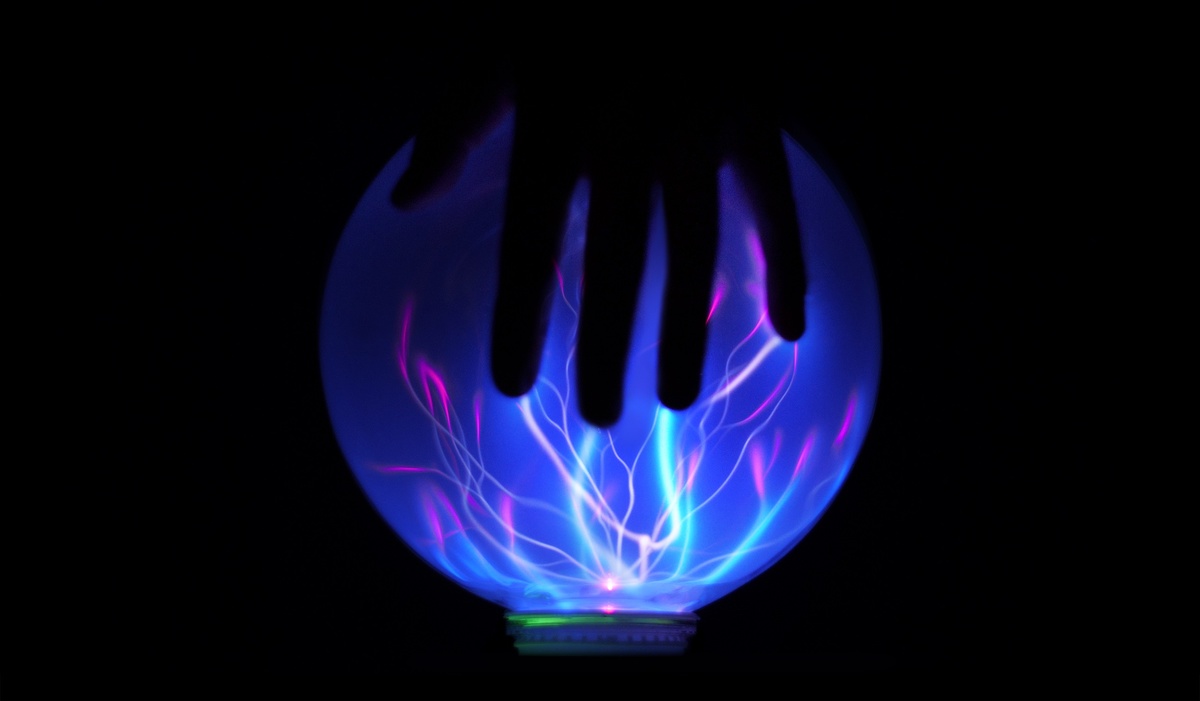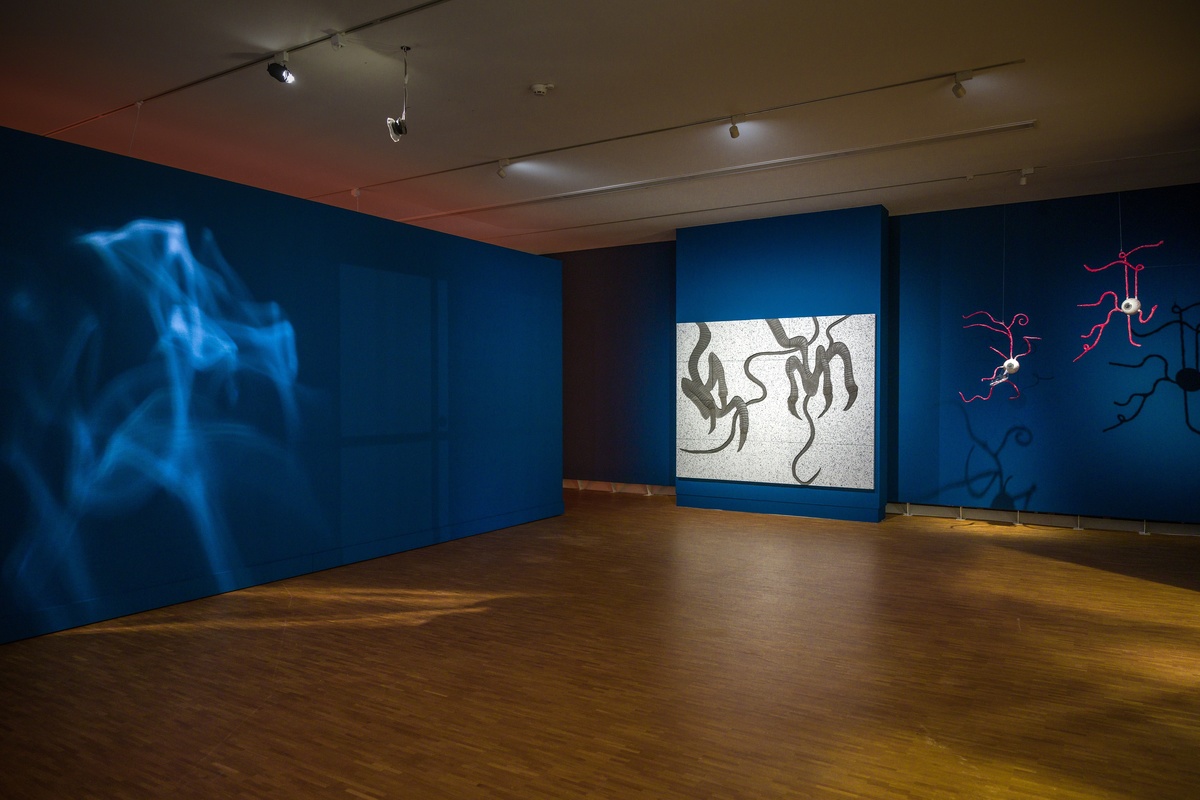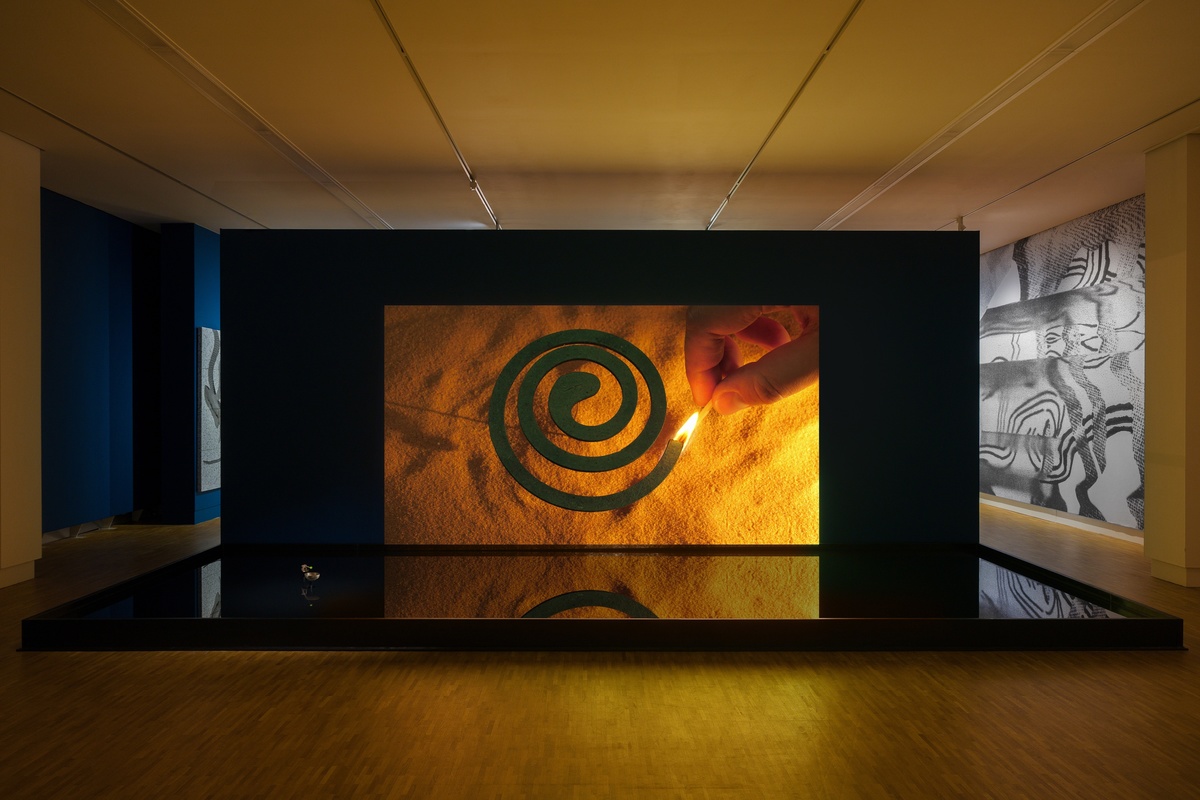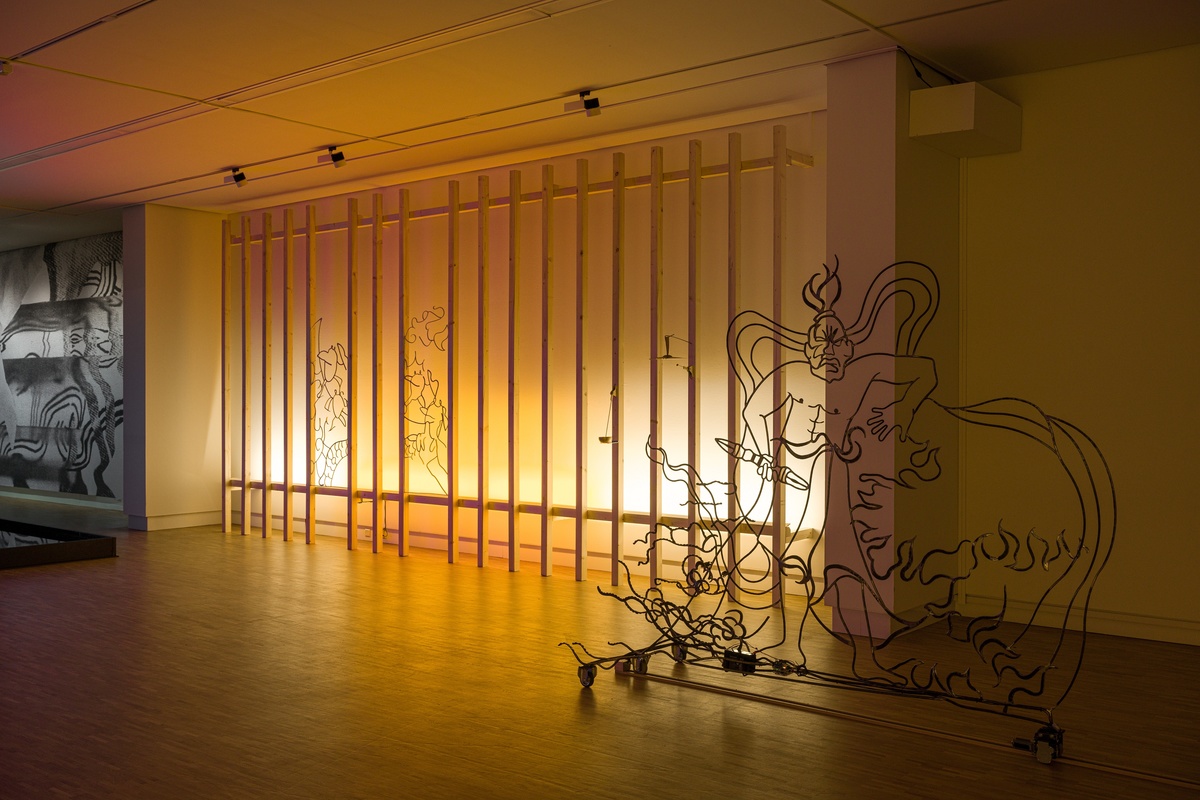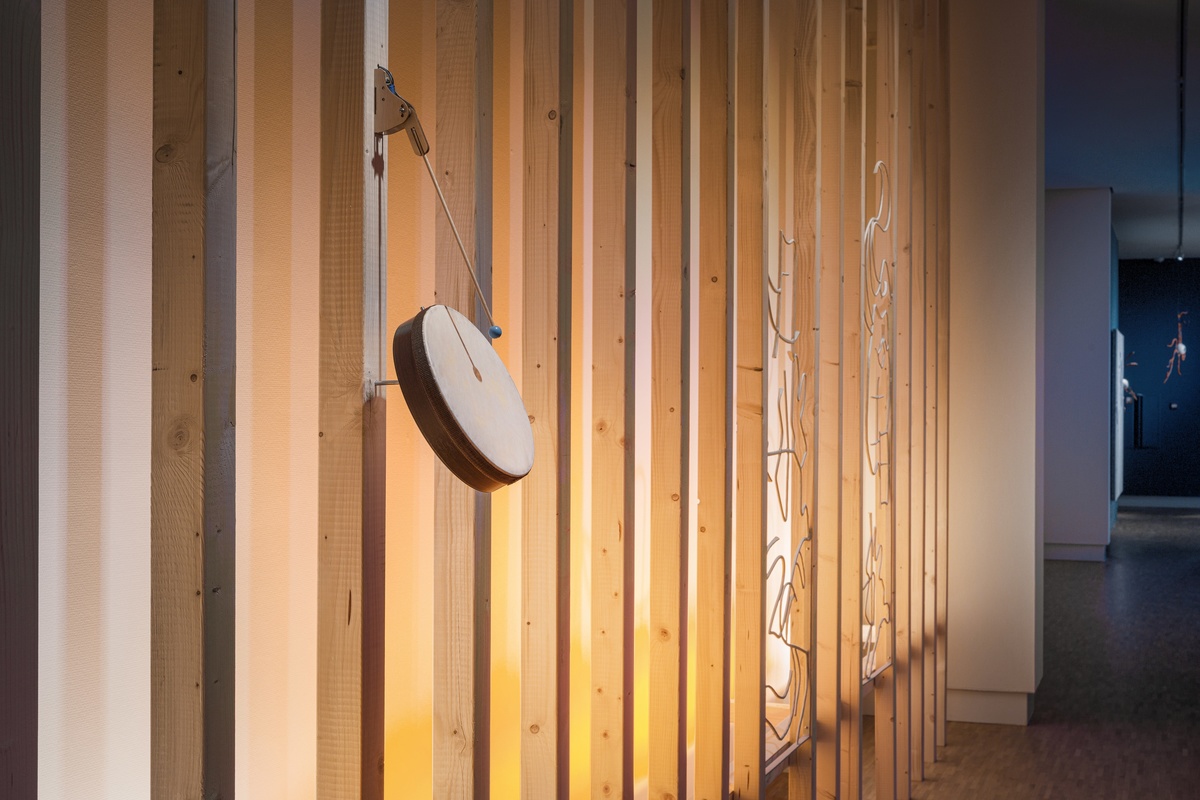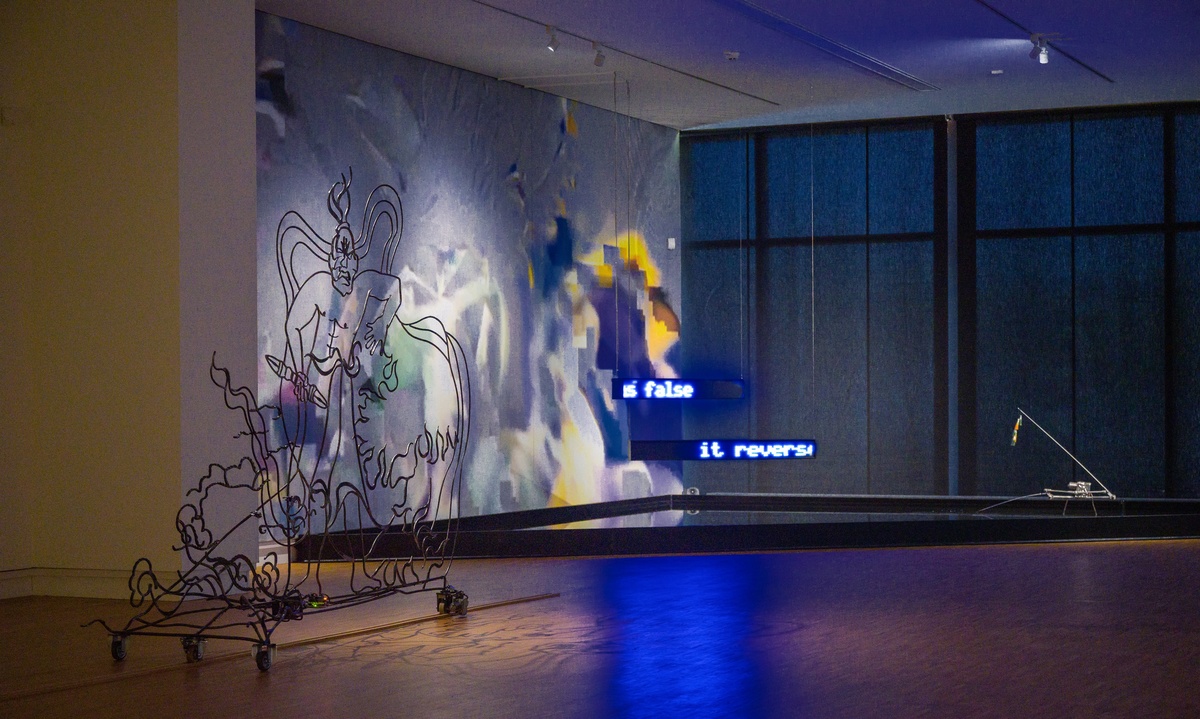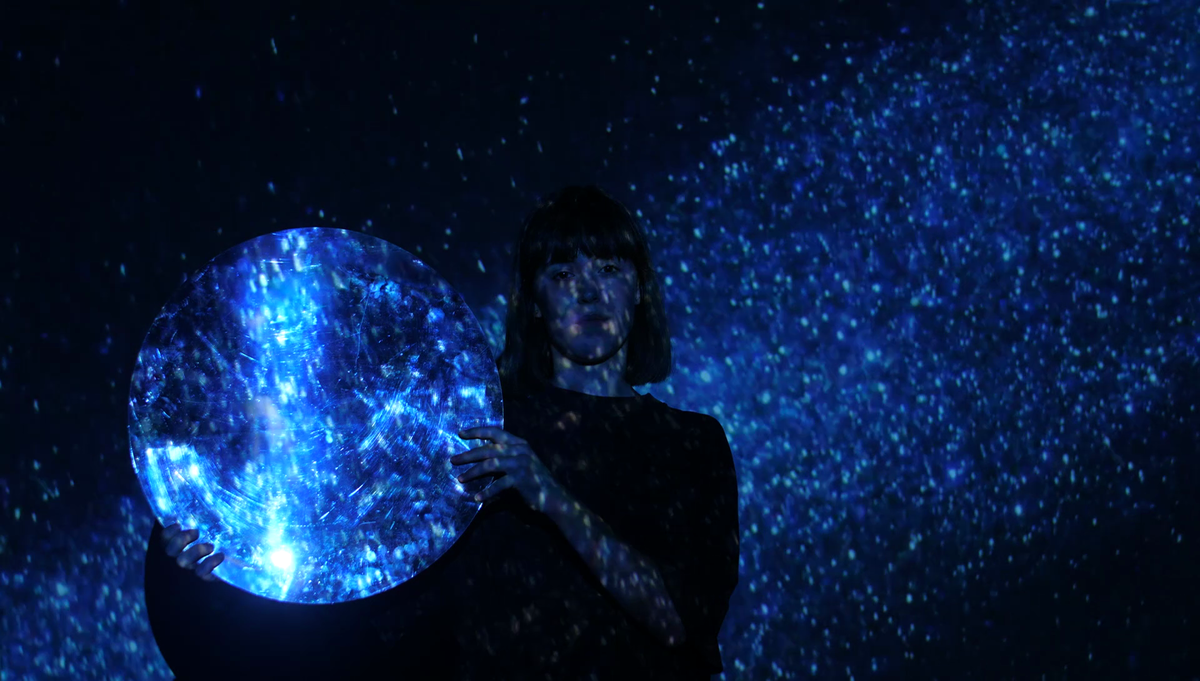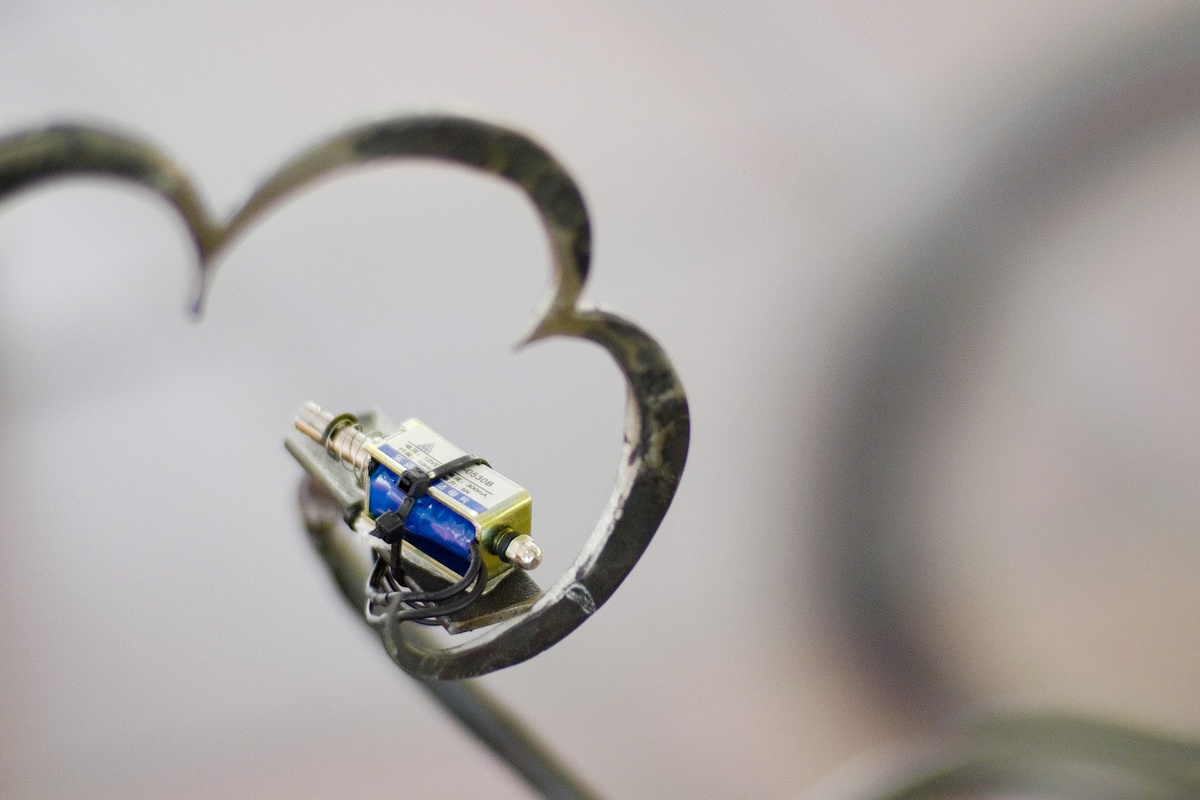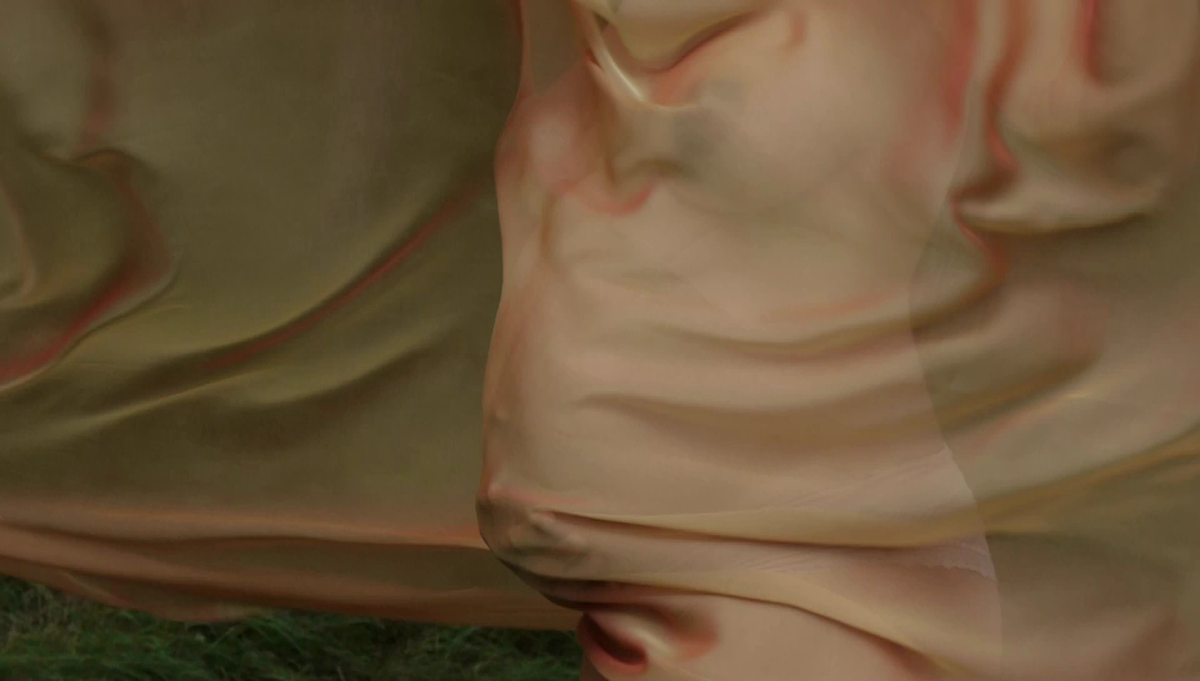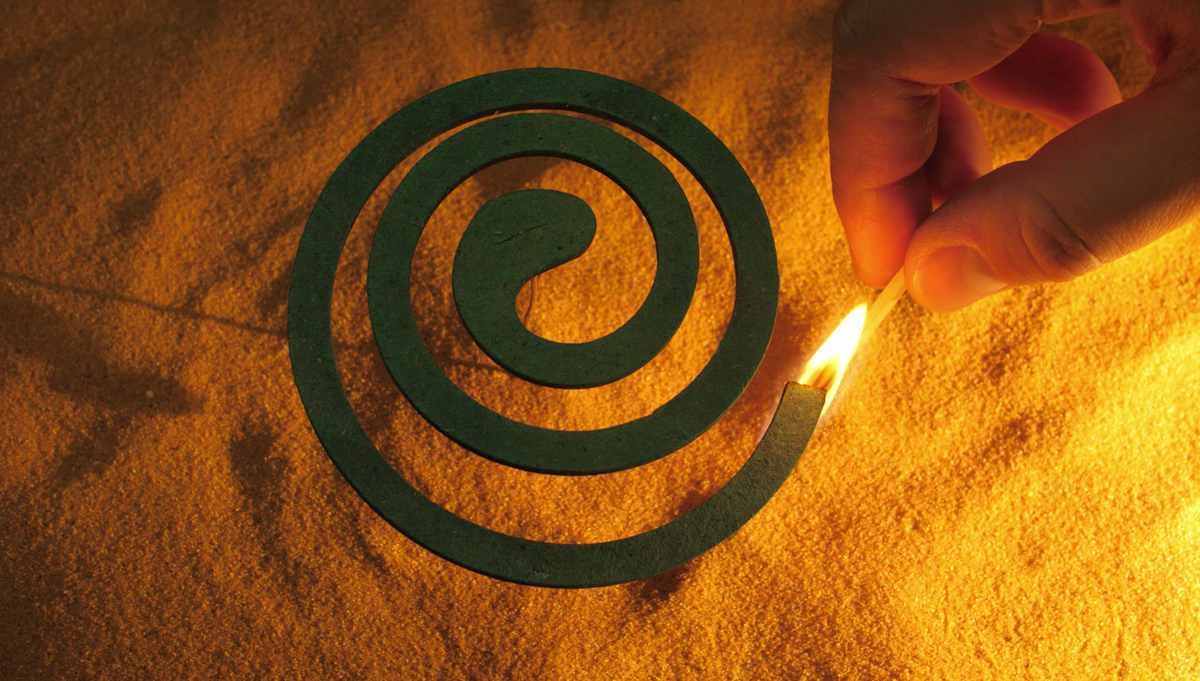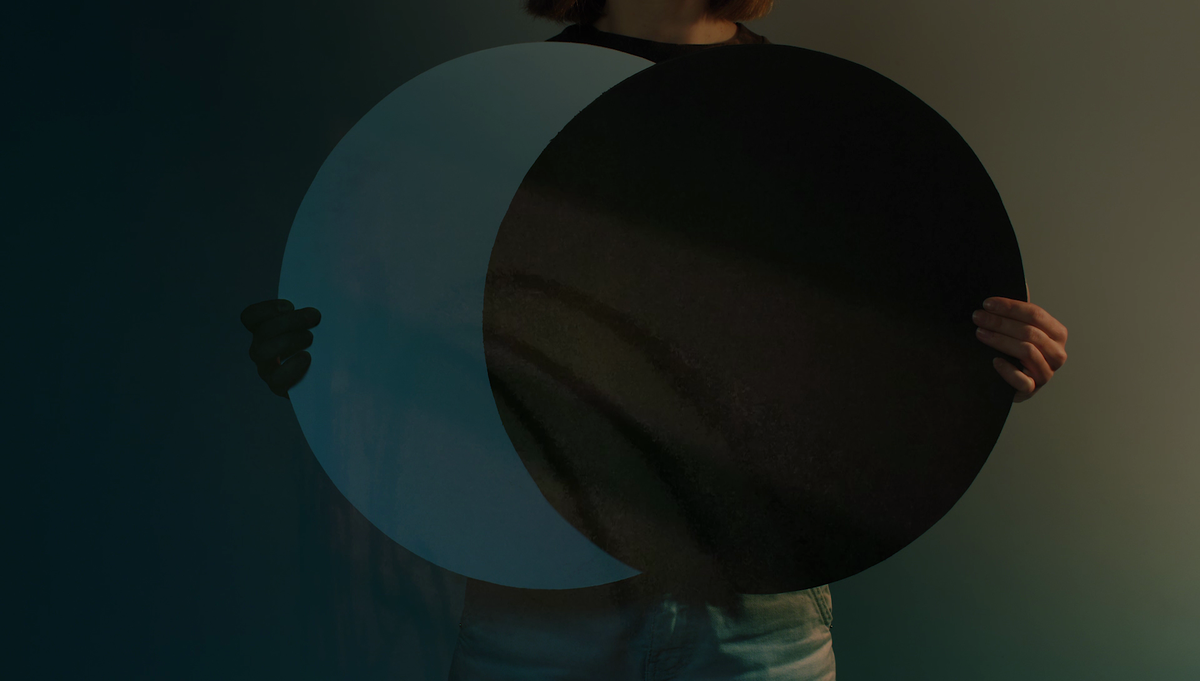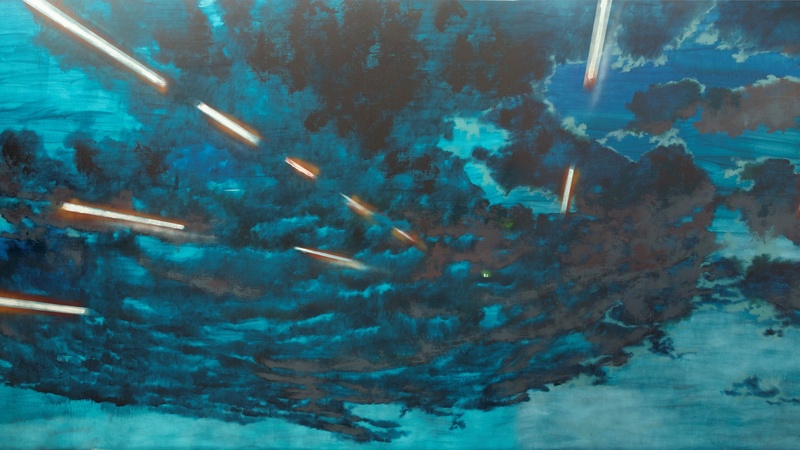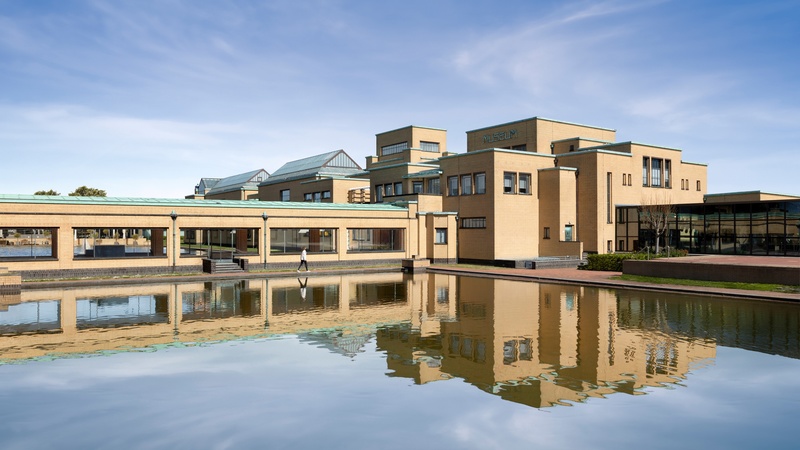Mickey Yang
With a plasma globe, a mosquito coil, the recurring sound of a singing bowl and a sense of humour, Mickey Yang explores the West’s interpretation of Asian philosophies and spiritual practices in its pursuit of self-optimisation. This spring KM21 presents her first solo museum show, Upaya, an exhibition about craftsmanship, language and cultural appropriation. Raised in the Netherlands by Singaporean-Chinese parents, Yang’s mixed cultural identity lies at the basis of her work. Her poetic installations combine tangible materials like wood and metal with ephemeral effects like smoke and reflection.
The exhibition will immerse visitors in a large installation consisting of video, audio and sculptural elements. The central feature is a loop video whose images are reflected in dark water. The voice-over, delivered in a dreamlike manner, tells the history of the West’s romanticised views of Asian beliefs in the form of a collage of quotes from original writings, modern self-help books and other sources. A number of kinetic objects distributed throughout the space tie in closely with the video. Self-playing musical instruments provide an immersive live soundtrack. At the same time, news tickers repeat quotes from the film in blue LED light, like mantras. When the final words have been spoken, the screen goes black, and all that remains is the sound of cicadas, as on a warm summer evening.
Craftsmanship
Yang’s use of traditional craftsmanship is nicely illustrated by two imposing gatekeepers, steel figures that move around the gallery at certain intervals. Other metal sculptures referring to the sun, moon and mounted warriors were created by Yang in hours of collaboration with an ornamental metalworker, transforming calligraphy and illustrations into graphic linework in forged metal. Yang likes to work with traditional crafts, as lots of these techniques are universal, used in many cultures and periods.
Language
Having grown up in a progressive Western culture with a traditional Chinese background, Yang feels she has a split cultural identity. Since she does not share a common mother tongue with her family, she has been forced to communicate in images. Chinese culture is both ancient and new, combining tradition and modern progress. Its strong visual traditions and ornaments include both clichés and timeless elements that Yang incorporates into monumental structures.
Cultural appropriation
The word upaya comes from Sanskrit. In Buddhism it refers to an aspect of guidance along the Buddhist paths to enlightenment. A conscious, voluntary act driven by incomplete reasoning about its direction. In the exhibition, Yang guides the visitor along a winding path, offering both confirmations and denials. This playful quest to find her own roots is also a sophisticated reflection on the West’s perception of Asian cultures and ideas.
About the artist
Mickey Yang (b. 1988, Eindhoven) lives and works in The Hague. She studied at the Royal Academy of Fine Arts (KABK) in The Hague, and is currently artist-in-residence at the Jan van Eyck Academy in Maastricht. Her work was recently shown at Kunstvereniging Diepenheim and P/////AKT in Amsterdam. In 2015 she was selected for Now or Never #3, a recurring initiative in which KM21 highlights promising new artists who have recently graduated from KABK in The Hague.
Upaya was originally also to have been shown at Kunsthalle Osnabrück, but was unable to open to visitors because of the Covid-19 pandemic. KM21 is delighted to be able to offer the public another chance to see the show.
